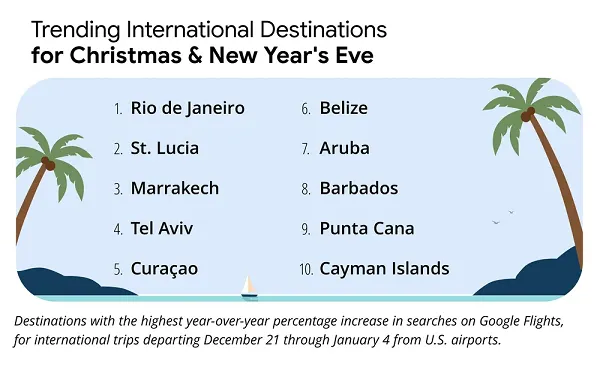I Reviewed 17 Content Marketing Analytics Tools: Here’s Everything You Need to Know
Creating successful marketing campaigns and compelling content starts with understanding the numbers behind your strategies.

Creating successful marketing campaigns and compelling content starts with understanding the numbers behind your strategies. For me, content marketing analytics are like having a behind-the-scenes guide — they reveal what’s working, what’s not, and where there’s room to grow. By using data effectively, I gauge the impact and success of my efforts. In this blog, I’ll walk you through some of the best tools I’ve come across for doing that. But I’ll start by discussing why content marketing analytics are absolutely essential. Table of Contents Content marketing analytics is the process of collecting and interpreting data related to your content marketing efforts, then using key performance indicators (KPIs) to measure the effectiveness of your campaigns. Common metrics include page views, engagement rates, conversion rates, and organic traffic. You should measure the performance of your content across all platforms and channels. The result of your analysis will help you understand what types of content perform best and how to distribute it. The data is super important because you can use it to inform your future strategy. The days of simply writing a blog post, targeting a few keywords, hitting publish, and hoping for the best are long gone. Although ranking content on the first page of Google is still a goal for many companies, content marketing analytics go beyond just blog posts. Social media posts, video scripts, and email newsletters all rely on effective content to drive engagement and conversions. Even PR efforts, such as measuring the quality of media coverage, cost-efficiency, and conversion rates, are deeply tied to the effectiveness of the content being shared. Content marketing analytics are important for the following reasons. Content marketing analytics offer actionable insights that empower data-driven decision-making. By tracking key metrics with tools like Google Analytics, you can pinpoint the strengths and weaknesses of your current strategy. This includes identifying which types of content resonate most, which platforms yield the best results, and the ideal times to engage your audience on social media. By analyzing metrics, I gain a deeper understanding of how my audience interacts with various types of content. To run a successful campaign, I suggest doing less and measuring more. A dashboard is a powerful tool for getting data in one place and making sense of the analysis. With a dashboard open in front of me, I ask insightful questions such as: The answers then provide a clear picture of the audience’s true preferences and actions. Basically, content marketing analytics makes it easier to spot trends and patterns. Effectively leveraging content marketing analytics to evaluate campaigns serves two key purposes: This data empowers me to experiment and refine my approach. It also allows me to observe shifts in performance and to frame effective future strategies. I recommend going through this free data analytics guide to equip yourself with more knowledge on the topic. I’ve been tracking content marketing performance for a client to measure its effectiveness. By analyzing key metrics, I’ve been able to uncover valuable insights that guide our content strategy. Our strategy revolves around repurposing existing blog content into engaging social media posts. We began by sharing niche-relevant content on the personal LinkedIn profile of the company’s CEO. We used a content marketing tool to gather performance data. I then organized the data in a simple Excel sheet. I am a fan of Excel as I could write down the topic of the post and its relevant data in front. This way, I was able to do a better comparison of performance with other topics (see screenshots below). Using this approach, I was able to identify which posts resonated with the audience and which ones fell short. The idea was to use this data to fine-tune our content marketing strategy for better results. I’ve broken down the process of using content marketing data into three clear sections. While you’re welcome to draw inspiration from my approach, feel free to adapt it to suit your needs. I typically update the spreadsheet with metrics about two weeks after a post goes live, ensuring there’s enough data to analyze its performance effectively. I include the post URL in the spreadsheet for quick and convenient access whenever needed. Alongside this, I record the date and time the post was published. Tracking the posting time provides an additional layer of insight, allowing me to evaluate how timing influences engagement levels. I document key metrics for each post, including impressions, reactions, comments, and reposts. Whenever I notice a spike in impressions, I can easily check which topics are performing better. Remember, the idea is to use data to identify patterns and insights to guide future content strategies. For posts featuring videos, I recorded both the number of views and the total minutes watched for each video. The total engagement and the engagement rate fields are automatically calculated in Excel. I use the following formulae: Total Engagements = SUM (Reactions + Comments + Reposts) Engagement Rate = Total Engagements / Impressions This aspect is perhaps the most impactful when it comes to making the most out of your data. I get the post-analytics data from Shield, which appears as follows: For instance, when targeting individuals in the marketing field, I make a note of the job titles of those who fit our target audience and have interacted with the post. Similarly, by clicking on the “Industries” section, I can identify the sectors of those engaging with the content. If an industry falls within our target audience, I note it down along with its corresponding percentage. Note: The Shield app’s post analytics also provide data on company names, locations, and company size. However, I did not include this information in the Excel sheet, as it wasn’t directly relevant to our analysis. I found this data tracking method to be highly effective, not just for its simplicity but also because it allowed our team to make data-driven recommendations to the client. When planning future posts and presenting ideas, we could base our strategy on actual performance metrics. For example, if a particular hook outperformed previous ones, the content strategist could think of similar hooks when writing content for future posts. Similarly, by analyzing the topics that garnered the most engagement, I reverse-engineered the framework used for that particular post. The idea is that this data helps in replicating the success for future content and discarding the framework or ideas that did not work. If you’d prefer not to do all the manual data entry, check out the tools I tested below. There are a number of marketing analytics tools available with customizable metrics, a variety of visualizations and dashboards, and integrations to help you measure the impact of your marketing strategy. Let’s dive into the best options. Best for: Measuring the performance of all your campaigns and combining resulting data with your CRM platform. In essence, HubSpot makes marketing analytics feel less like a chore and more like a strategic advantage. There are four Marketing Hub plans with different analytics features and flexibility ranging in price from free (forever) to $3,600 per month. Best for: Understanding channel performance in detail with customizable reports. Buffer is a fantastic content marketing analytics tool for digging deep into social media performance. Here are some interesting features: Buffer’s Marketing Analytics product has three payment options with different features and flexibilities. Best for: Integrating content marketing analytics seamlessly with other Google business tools and making data-driven strategic decisions. Here’s what I appreciate about Google Analytics: Google Analytics offers a free and a paid plan. The free plan is ideal for SMBs, and you can get started using it immediately. Meanwhile, the paid plan, called Analytics 360, is ideal for enterprise-level companies and requires you to speak with a sales rep for a quote. Best for: Understanding where your website and content strategy stand in comparison to industry standards. SimilarWeb has the following benefits: Best for: Tracking SEO and keyword performance across your web pages and content strategy. Semrush is an essential tool for managing and improving the SEO strategy. Here’s what makes it so effective: Semrush offers three plans that range in price from $119 to $449 per month. Best for: Tracking and visualizing sessions on websites with heat maps. Hotjar is an incredible tool for understanding how visitors interact with my website. Here’s why I think it’s worth using: All of these prices become a bit lower if you choose the annual billing option. Best for: Measuring your SEO content strategy and determining which keywords you should be using. Moz is my go-to tool for optimizing SEO content strategy. Here’s what stands out about it: Best for: Making it easy for the whole team to understand how content drives business. Parse.ly is a fantastic tool for content-driven teams, and here’s why I’d recommend it: Parse.ly makes understanding and acting on content performance straightforward, empowering teams to create strategies that drive real business results. Parse.ly requests potential buyers to book a demo for getting a custom quote and selecting the right plan for their company. Best for: Improving social planning by analyzing the success of your social media marketing strategy with customizable metrics. Quintly is a powerful tool for taking social media marketing strategies to the next level. Here’s why it stands out for me: Quintly’s pricing is available on request. Best for: Visualizing and analyzing real-time marketing trends to tailor content to your target audience. BuzzSumo is my go-to tool for staying on top of marketing trends. Here’s why I find it so valuable: Best for: Discovering how your audience interacts with your website/apps and understanding their behaviors. Here’s why I suggest checking out the tool: Kissmetrics is perfect for refining content strategies and improving user retention by understanding what truly matters to your audience. The SaaS plan comes with four payment options — those plans are $299, $499, or a custom price (based on your custom plan). Best for: Combining all of your marketing data to track and understand the success of your strategy in a single location and in real time. I recommend Databox to anyone who wants a centralized way to track their marketing performance. Here’s why I think it’s a great tool: Best for: Taking marketing data from any source and moving it into Google Sheets, Google Data Studio, Microsoft Excel, Google BigQuery, or Snowflake for analysis. If you want a powerful way to centralize and analyze your marketing data, Supermetrics is a fantastic choice. Here’s why: Supermetrics and HubSpot Integration: Business Performance Tracking Supermetrics has several products, so pricing differs depending on the product you opt for. For instance, if you are looking to move your data to any of Google Sheets, Microsoft Excel, Looker Studio, and Power BI, the starting price is $29/month. If you’re looking to get the Supermetrics API or use any of Snowflake, Azure, BigQuery, Google Cloud Storage, you are prompted to fill out a form to request pricing. Best for: Moving all of your HubSpot data into Google Sheets for easy analysis in your platform of choice. Here’s what makes Demand Sage so helpful: If you’re using HubSpot and need an intuitive way to analyze your data in Google Sheets, Demand Sage is a no-brainer. Demand Sage’s basic plan is free. When I checked out the Premium plan, I was prompted to reach out to a sales representative for more information. Best for: Importing and transforming business data from a variety of sources and then combining that data on custom dashboards. Get a free Grow.com demo and talk to a rep about the price of the right plan for your business. Best for: Keeping your team on top of goals and targets with dashboard data visualization software. Plecto is an excellent tool for keeping your team focused and aligned. Here’s why I recommend it: Plecto offers three payment options depending on which plan you choose: The pricing reduces when you opt for the yearly billing option. Best for: Automating data integration across hundreds of sources. Adverity is a go-to marketing data analytics tool for the following reasons: If you’re looking to streamline your marketing data processes and make smarter, data-driven decisions, Adverity is definitely a tool worth considering. Adverity’s idea is that they don’t stick to rigid pricing plans. For each customer, the pricing is different, so you’re prompted to fill out a form to get a custom quote. When measuring the performance of your content, I suggest going through the following steps: With so many performance indicators available, I focus on figuring out which ones matter most for my goals. Here is a list of indicators to choose from: To truly gauge brand awareness, I suggest taking a look at other metrics on this list such as page views, social media engagement (or simply using the process of social listening), downloads, video views, referrals, and resource/document reads or shares. I find content marketing analytics tools are indispensable for refining and optimizing your content strategy. They have the power to help your team understand the health of your strategy, audience behaviors, interactions, and progress to goals. As a result, you’ll have the information you need to improve the customer experience, resonate with your audience through your content, and increase conversions. I recommend you ensure that the content you create delivers real value. Refine your SEO strategy with tools such as Moz and Semrush. Analyze customer engagement with tools like Buffer and Hotjar. Create dashboards to view your metrics and workflows to automate manual tasks using HubSpot. The idea is not just to collect data but to turn it into actionable insights that can shape better decision-making and drive tangible results. Leverage these tools to fine-tune your approach and enhance the customer experience. Editor's note: This post was originally published in June 2020 and has been updated for comprehensiveness.
What are content marketing analytics?
Why are content marketing analytics important?
Evaluating Campaign Performance
Measuring Progress Towards Goals
Helping Create Better Strategies
How to Use Content Marketing Analytics Data
Tracking Content Details

Tracking Metrics


Tracking Audience Engagement
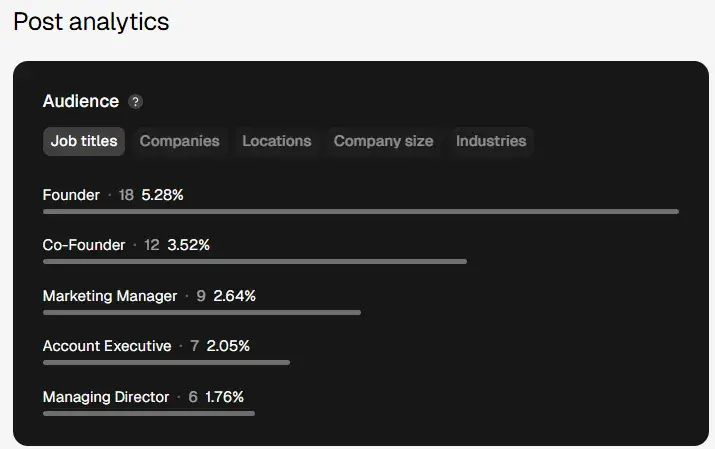

My Learnings
Content Marketing Analytics Tools
1. HubSpot Marketing Analytics and Dashboard Software
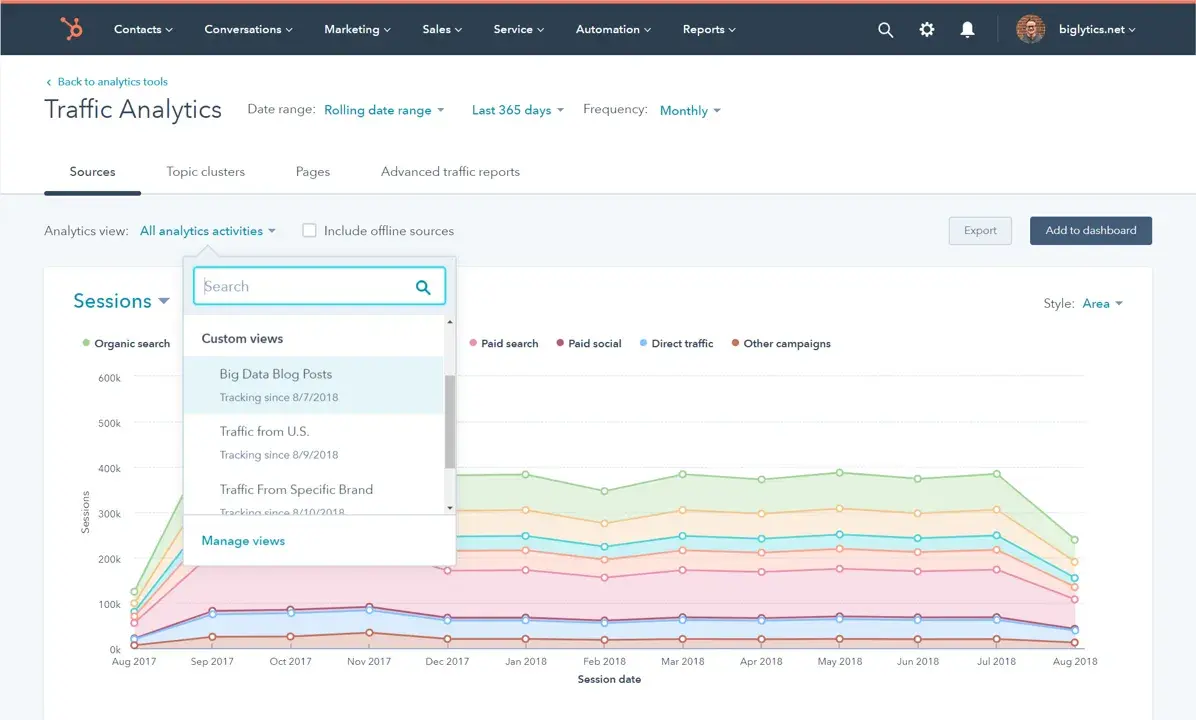
What I Like About HubSpot Marketing Analytics and Dashboard Software
Centralized Insights. I love how all the data and insights are accessible from one location. No more hopping between platforms; I can get the information I need in seconds.
Custom Behavioral Tracking. The ability to trigger or schedule touchpoints and track interactions unique to my business is a game-changer. I appreciate that it conveniently highlights when a customer is ready to move to the next stage of the buyer’s journey.
Attribution Reporting. It connects every customer interaction to its associated record and revenue generated. It helps me see exactly which efforts are paying off and which need tweaking.
Visual Data Dashboards. The pre-built and customizable dashboards (including Custom Objects) make it easy to visualize data. I am able to use workflows to quickly transform insights into actionable strategies for my segments and campaigns.
Price
2. Buffer
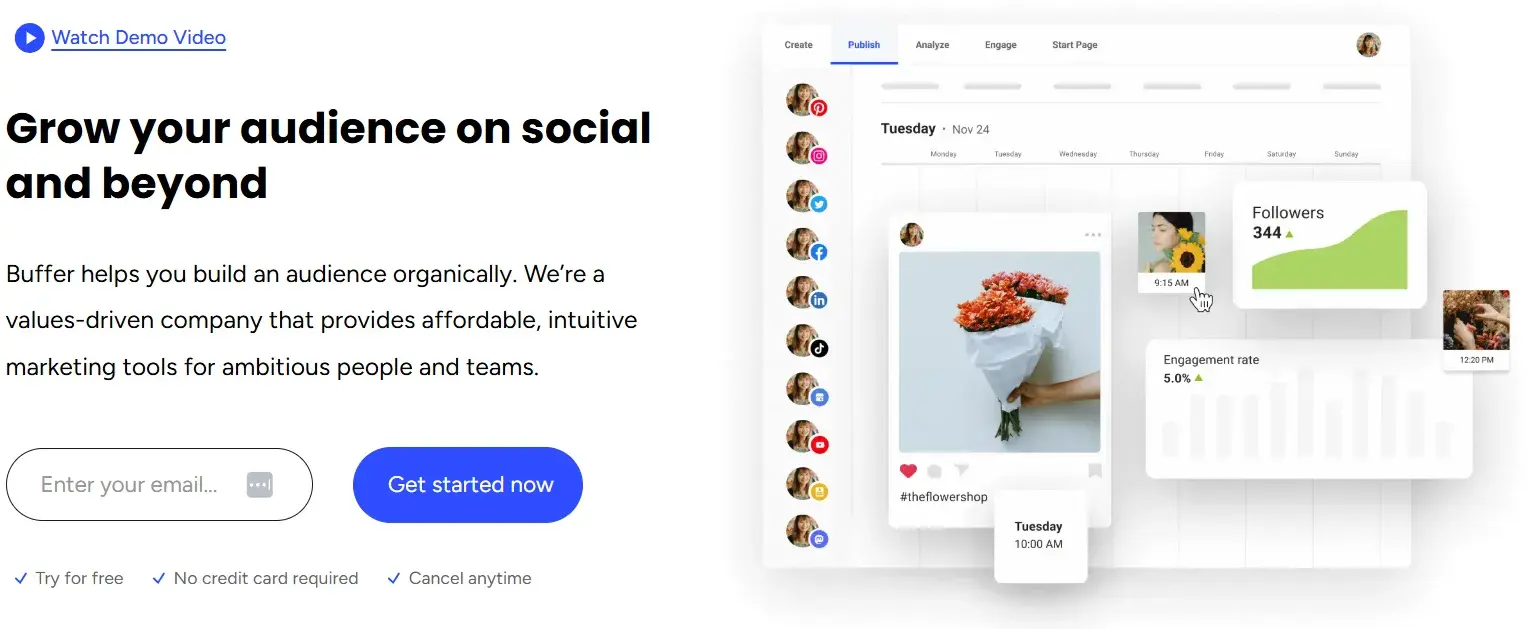
What I Like About Buffer
Price
3. Google Analytics
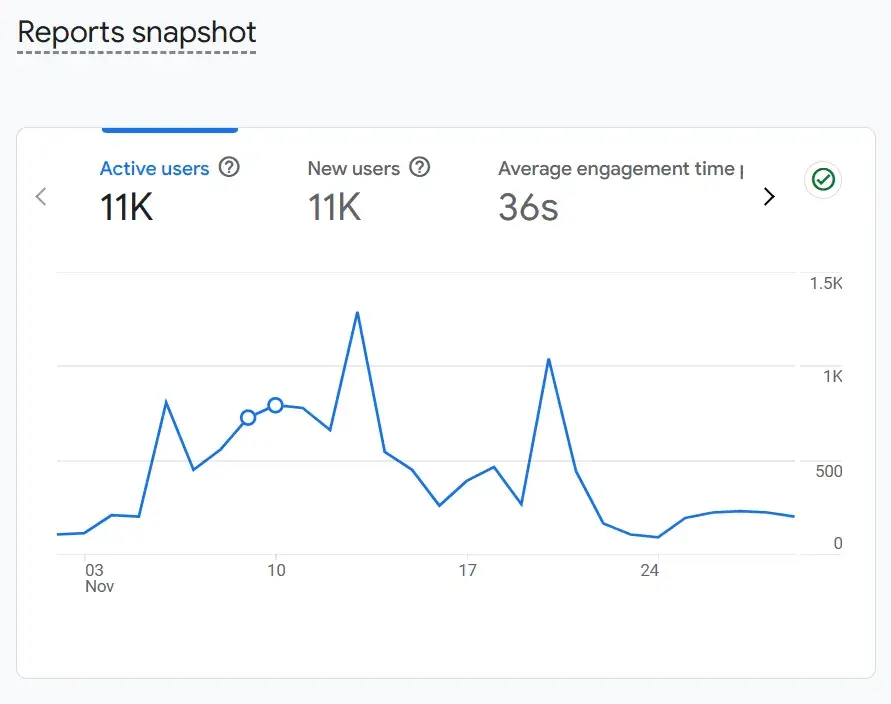
What I Like About Google Analytics
Price
4. SimilarWeb
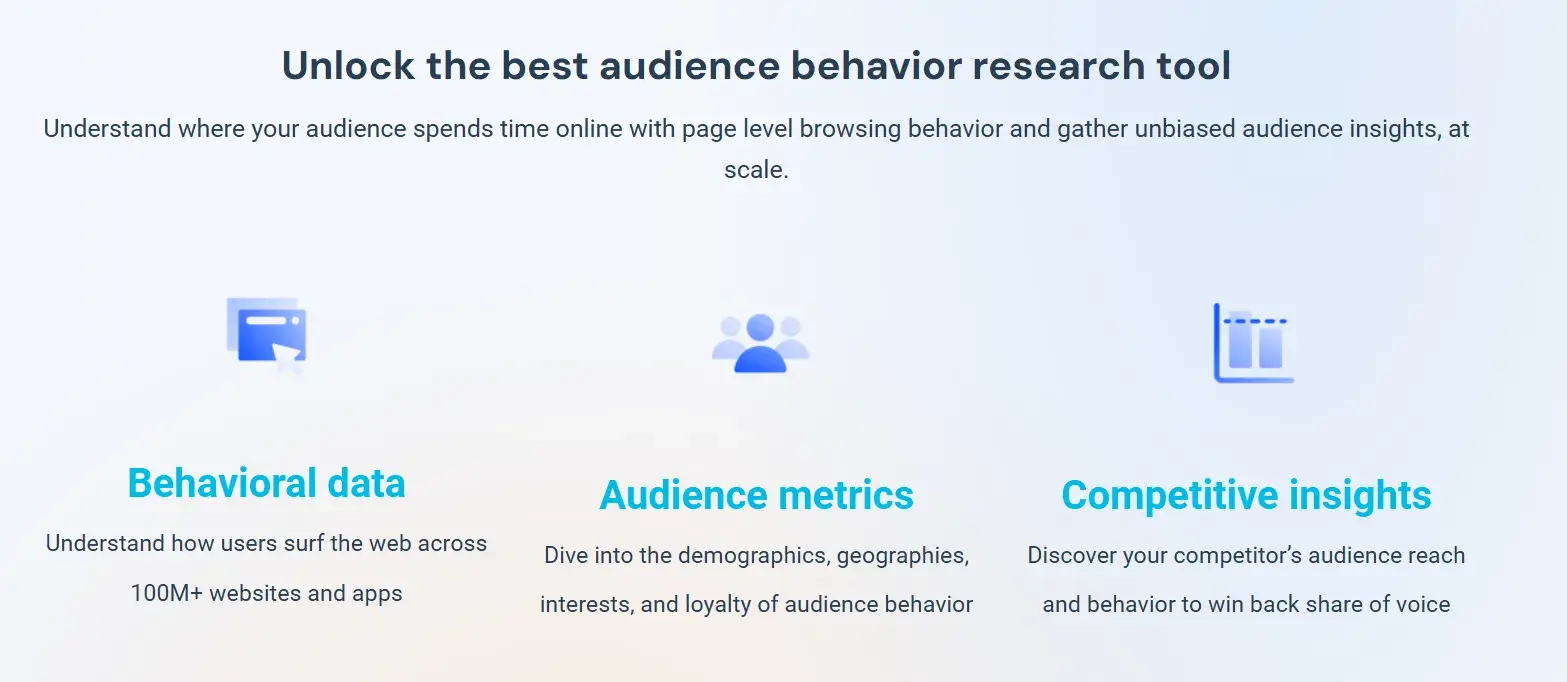
What I Like About SimilarWeb
Price
Starter - $199/month
Professional - $449/month
5. Semrush
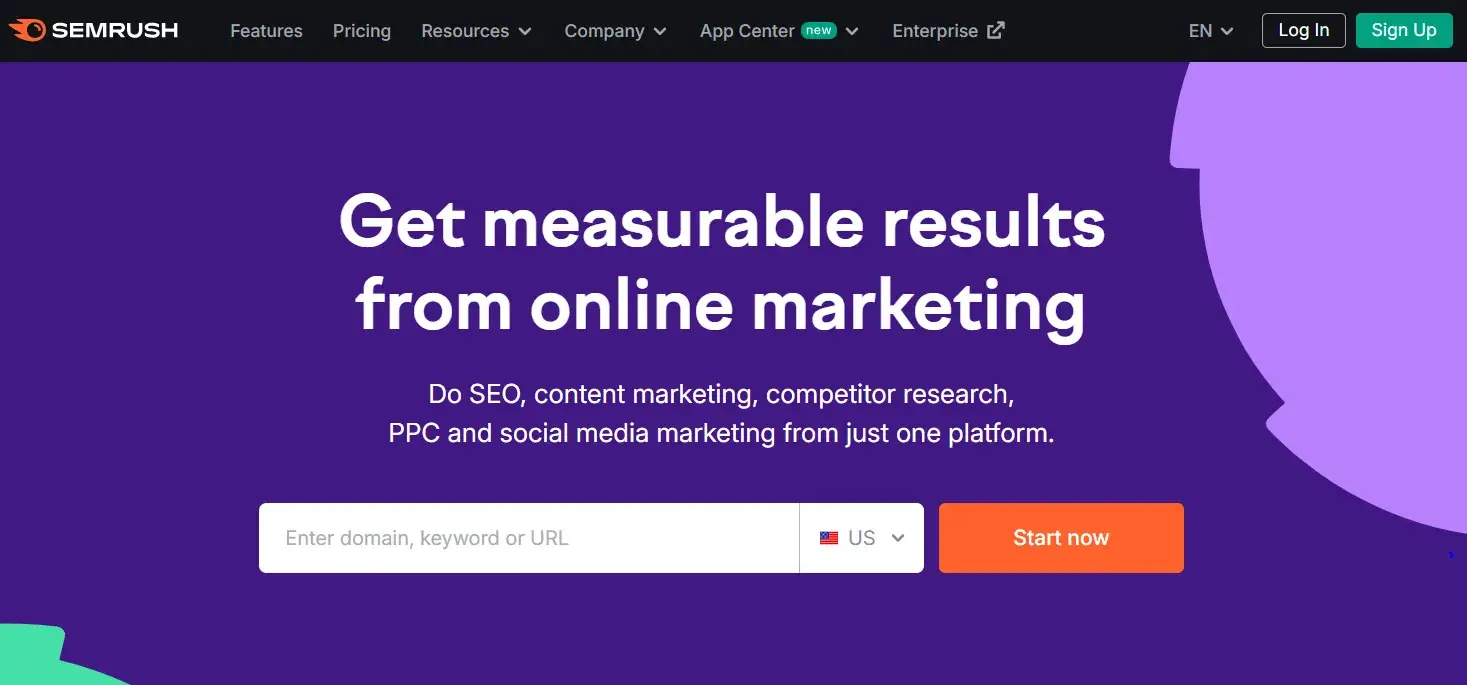
What I Like About Semrush
Price
6. Hotjar
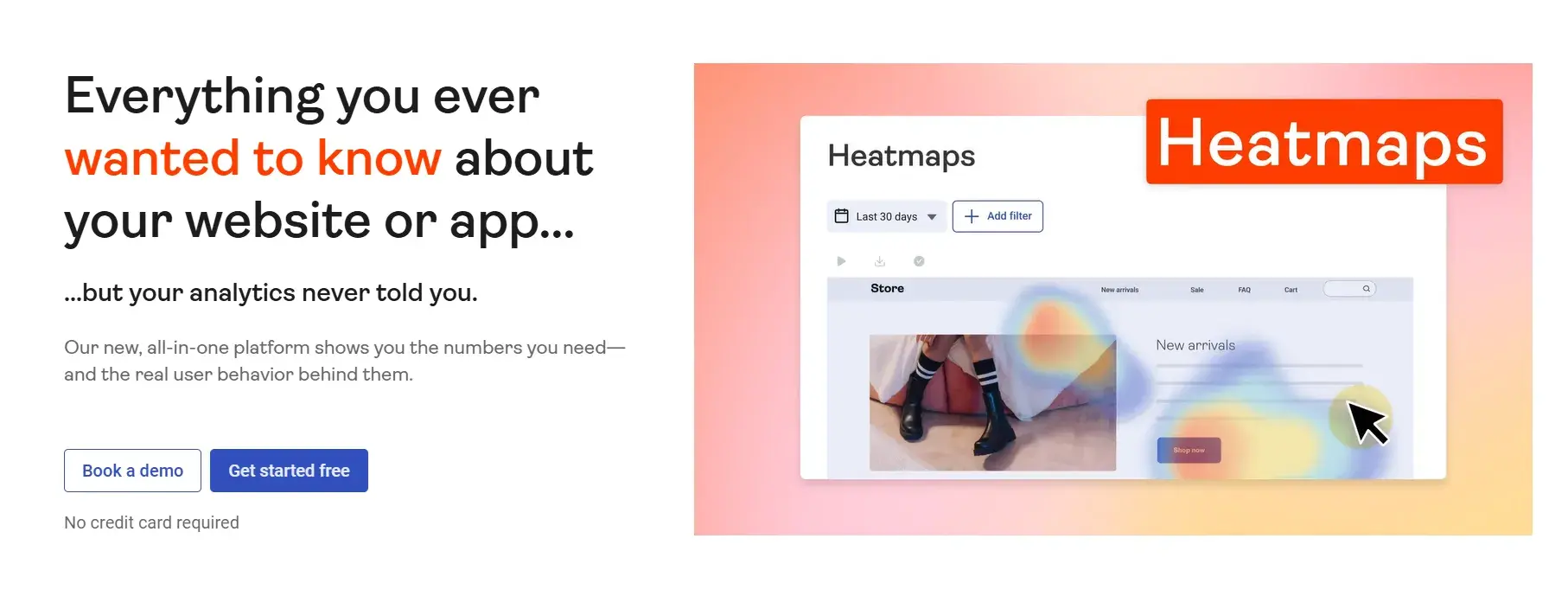
What I Like About Hotjar
Price
Free
Plus - $39/month
Business - $99/month
Scale - $213/month
7. Moz
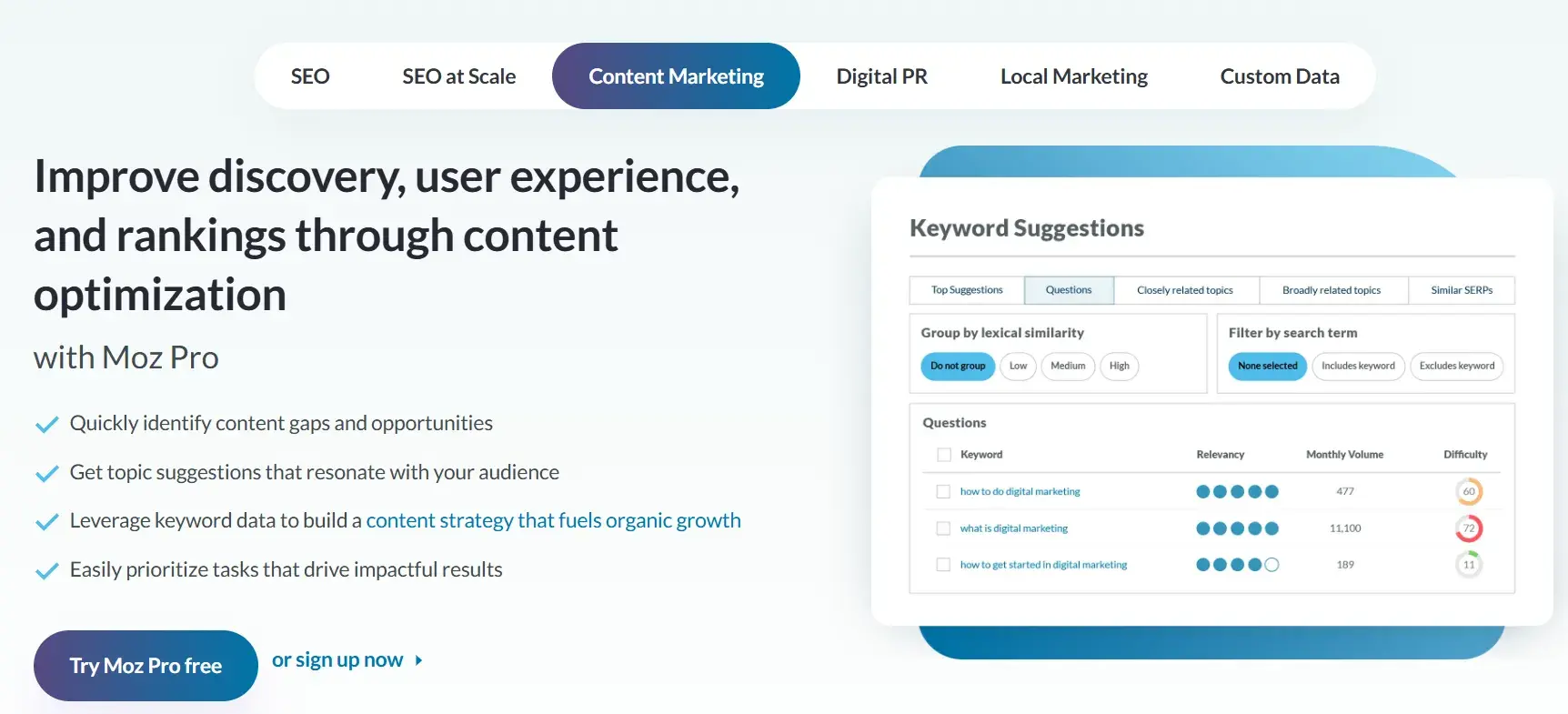
What I Like About Moz
Price
Local - $14/month
Pro - $99/month
Stat - $720/month
8. Parse.ly

What I Like About Parse.ly
Price
9. Quintly
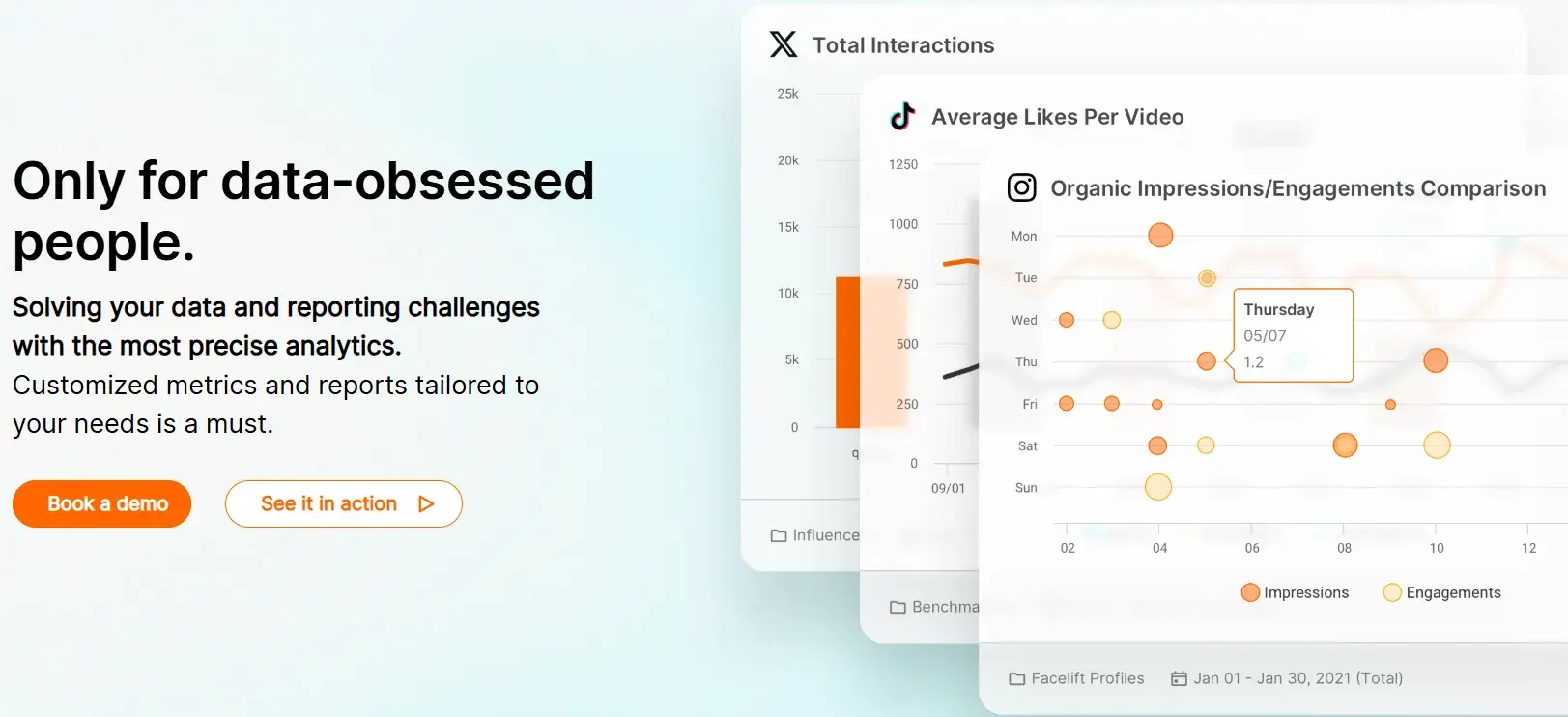
What I Like About Quintly
Price
10. BuzzSumo

What I Like About BuzzSumo
Price
Content Creation - $199/month
PR & Comms - $299/month
Suite - $499/month
Enterprise - $999/month
11. Kissmetrics
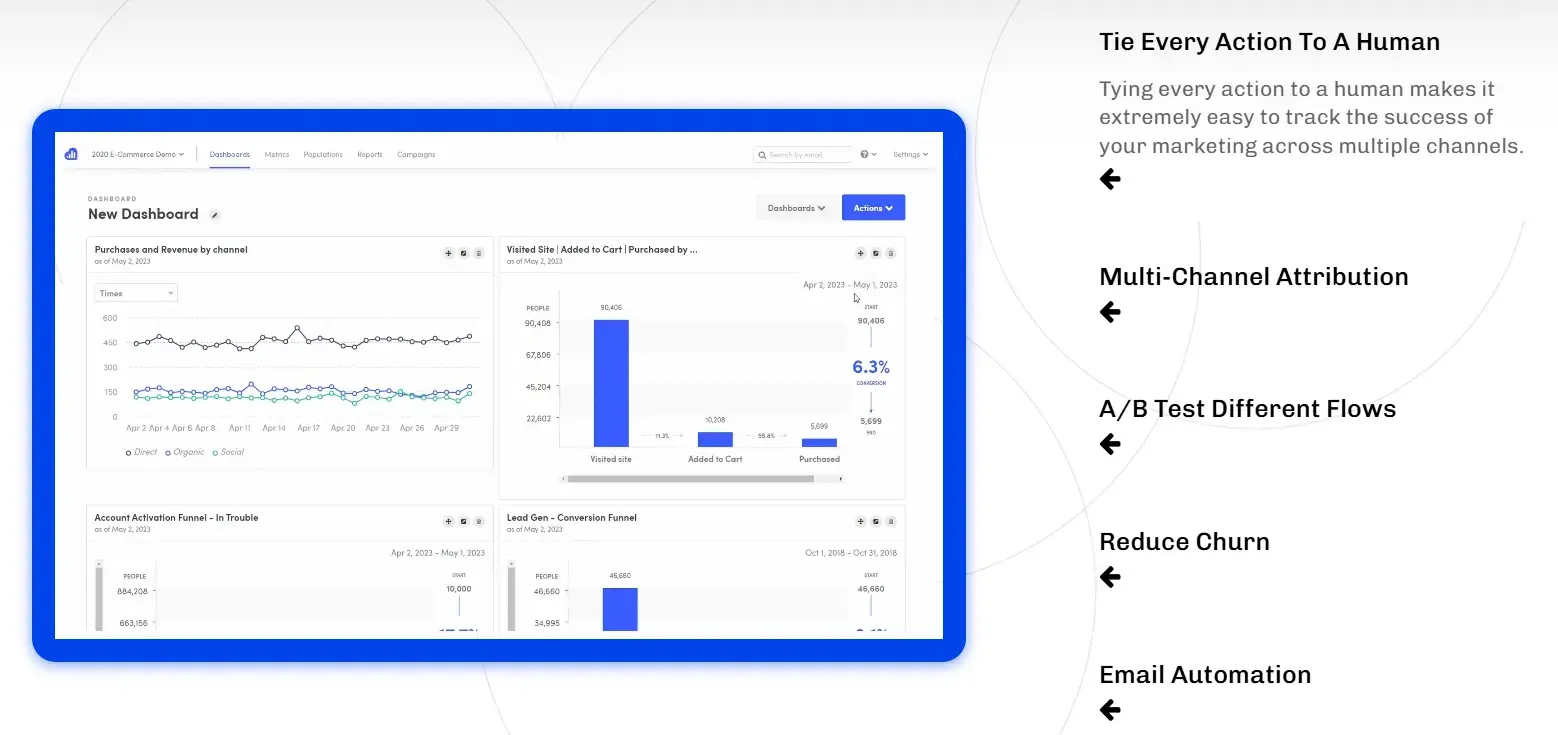
What I Like About Kissmetrics
Price
12. Databox
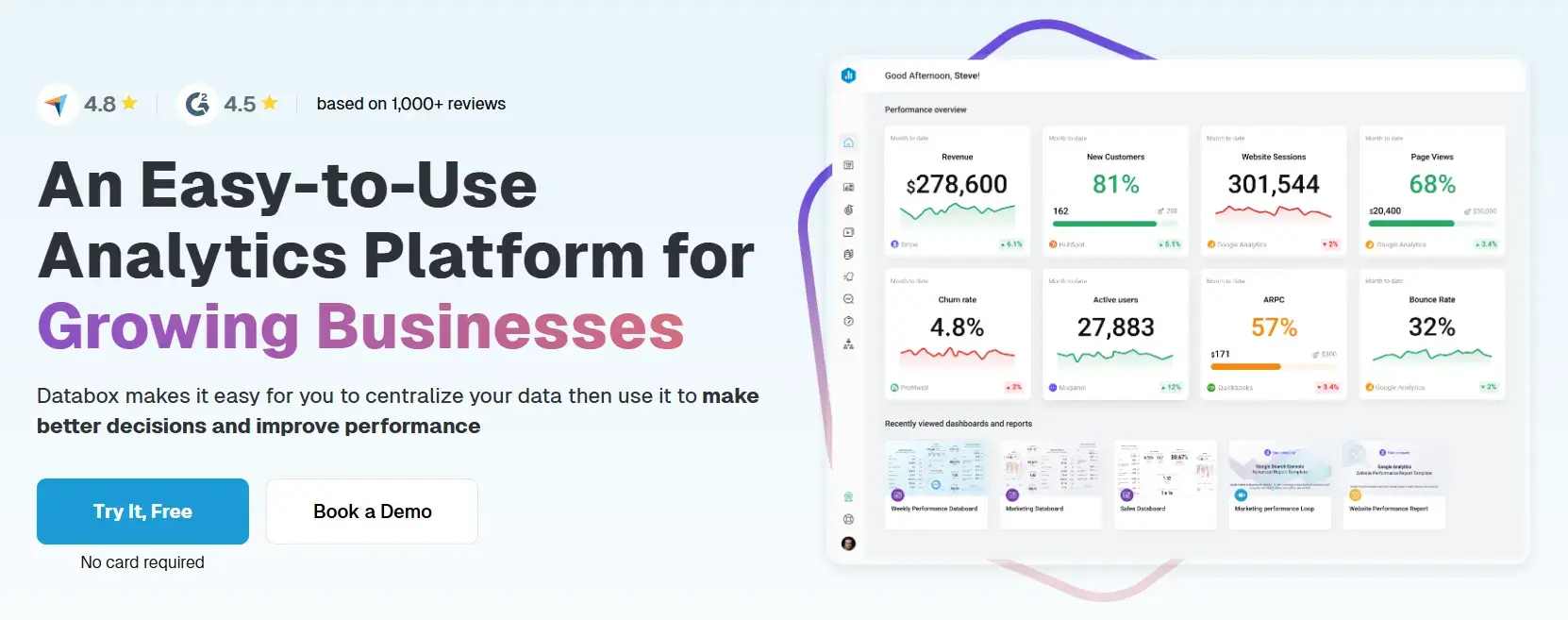
What I Like About Databox
Price
Free Forever
Starter - $59/month
Professional - $199/month
Growth - $399/month
13. Supermetrics
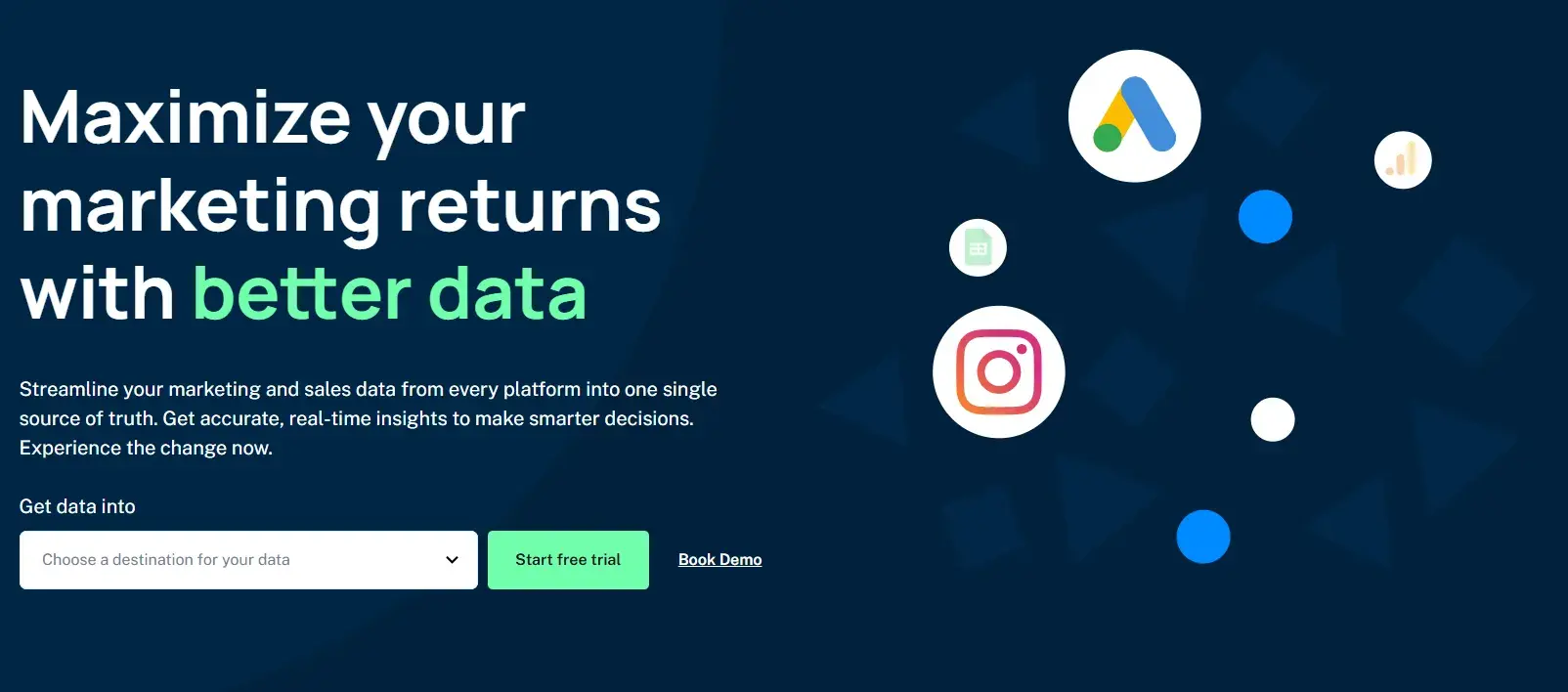
What I Like About Supermetrics
Price
14. Demand Sage
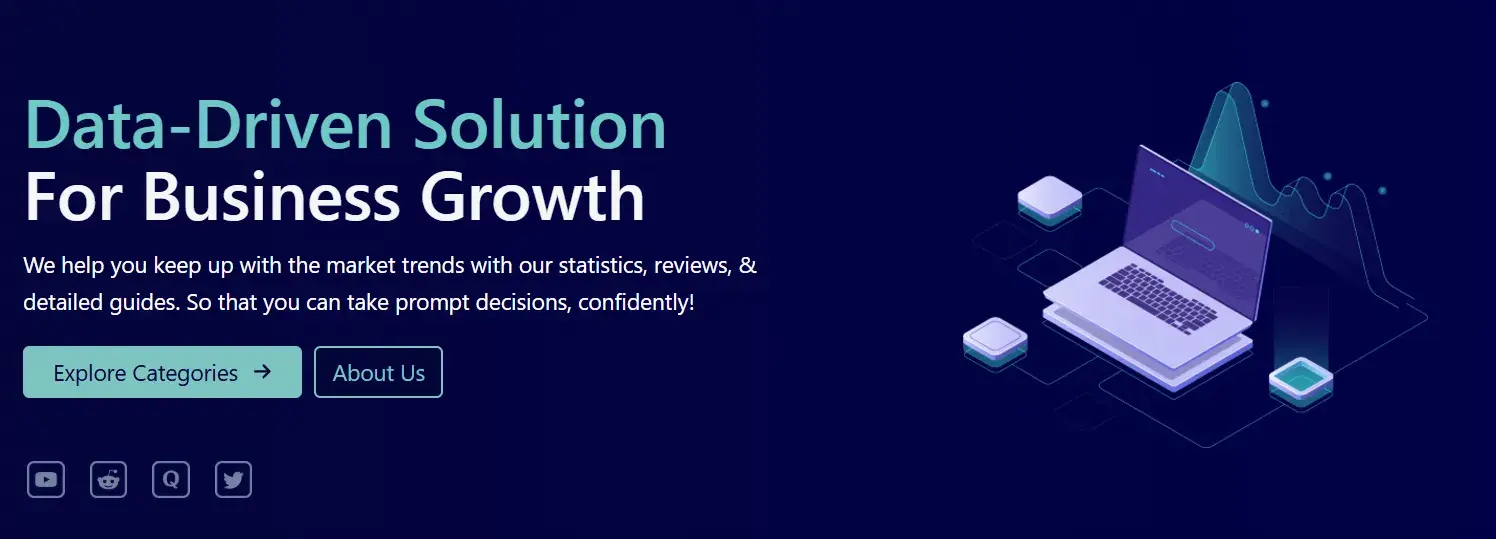
What I Like About Demand Sage
Price
15. Grow.com
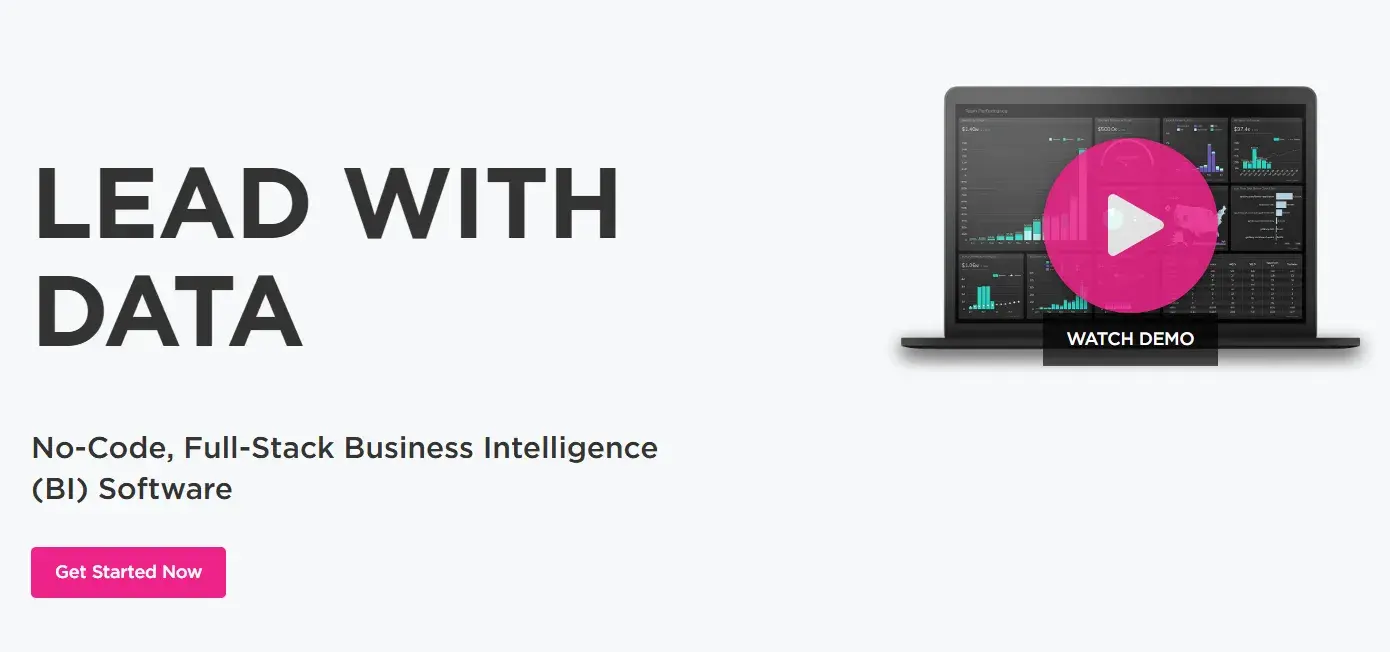
What I Like About Grow.com
Data Visualization Flexibility. I can select from a variety of chart types to visualize my data in the way that makes the most sense for me and my team. This flexibility ensures that we always get a clear view of our performance.
Collaborative Sharing. The ability to share metrics and dashboards with my team ensures that everyone is aligned on where to focus efforts — something that’s key for driving results.
Price
16. Plecto
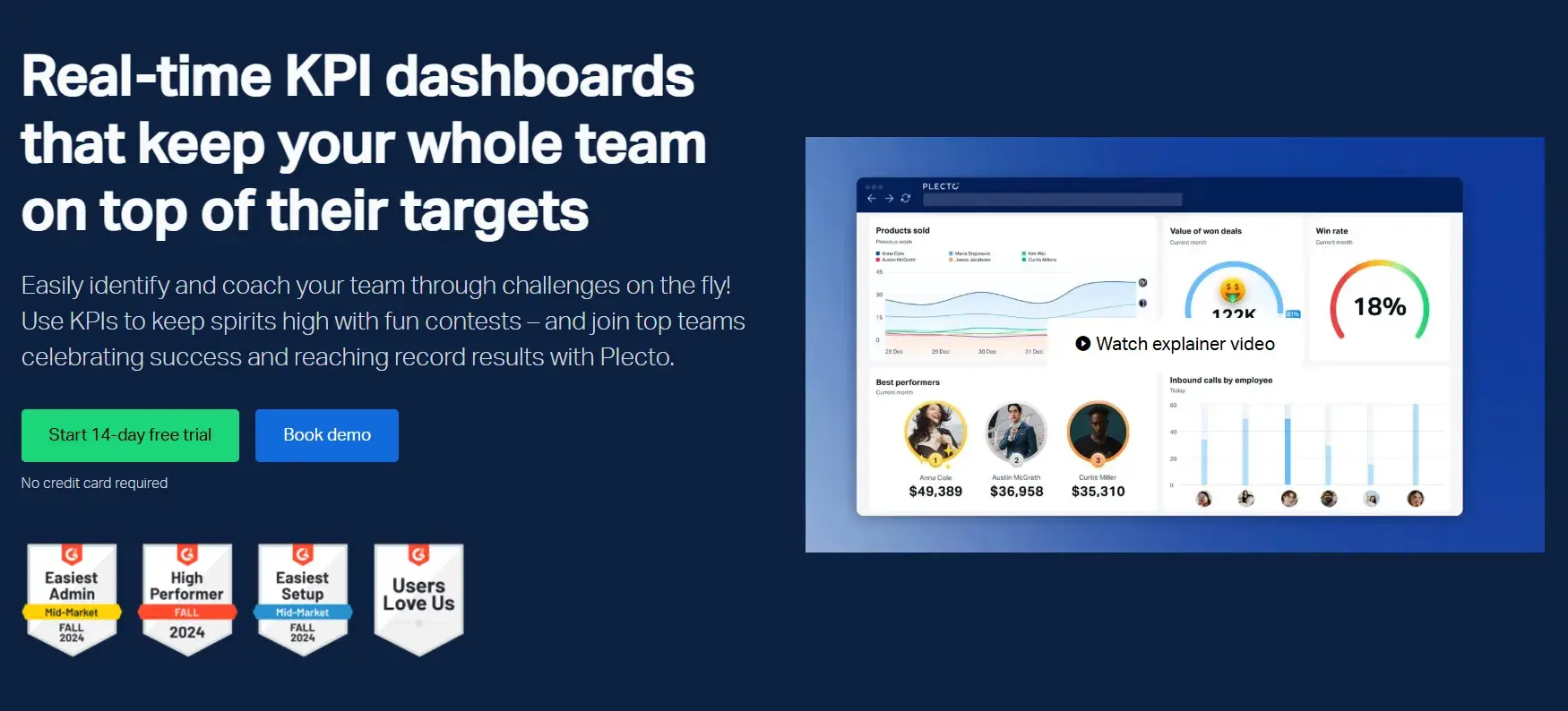
What I Like About Plecto
Price
17. Adverity
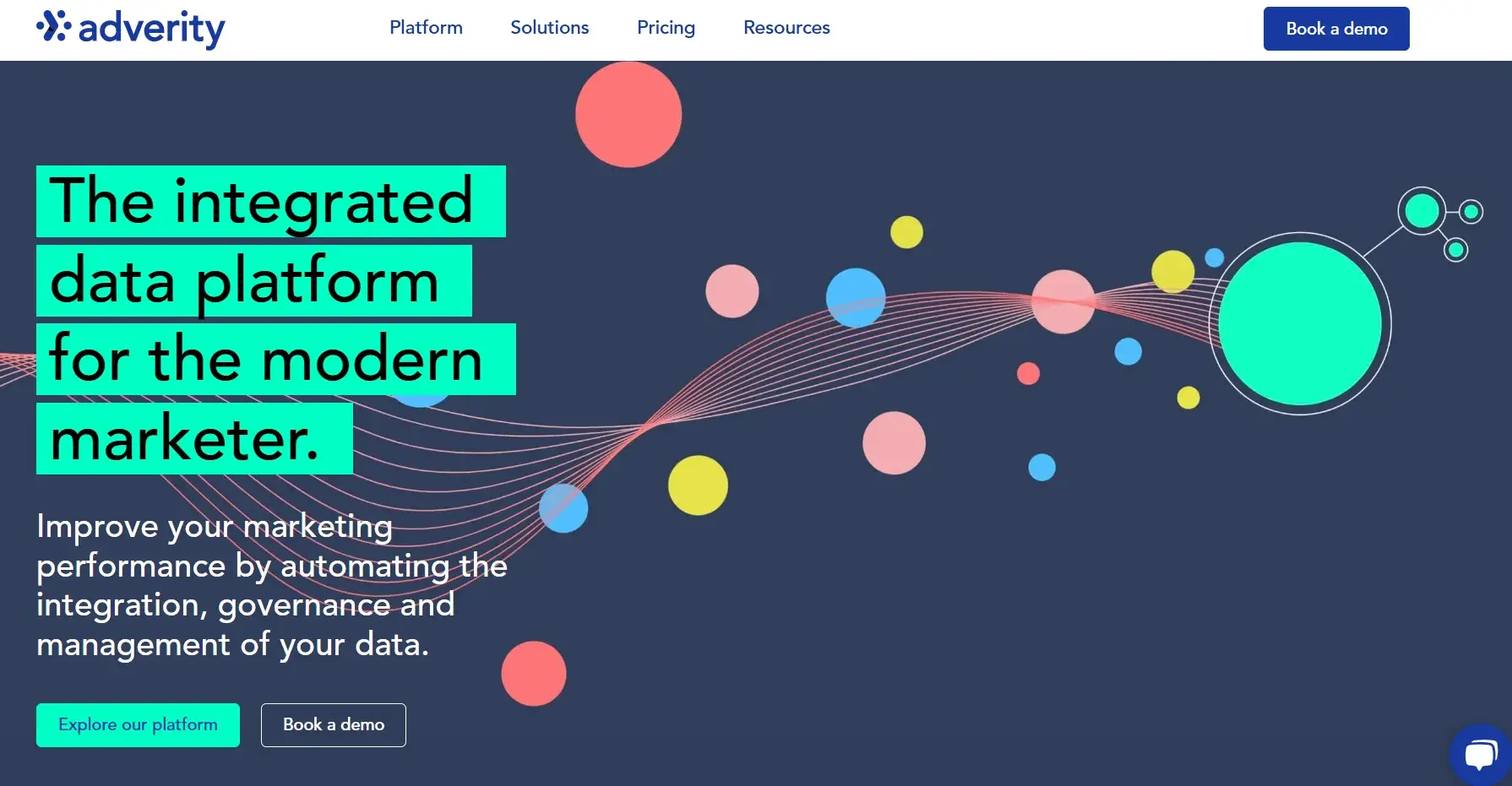
What I Like About Adverity
Price
Content Performance: What I Recommend You Focus On
Content Performance Indicators
Apply Content Marketing Analytics to Grow Better

 Hollif
Hollif 




























